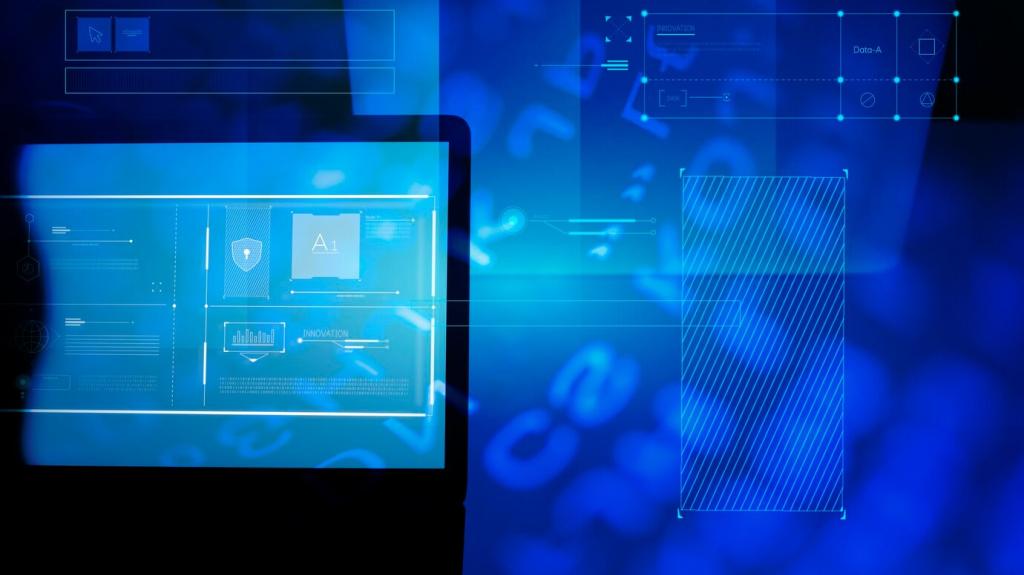
Beginner's Guide to Cybersecurity Tools and Best Practices
Cybersecurity is a crucial field that ensures the safety and privacy of your digital life. Whether you are just starting to explore the vast world of technology or already familiar with some basics, understanding the foundational tools and best practices of cybersecurity can help you protect your computer, personal data, and online activities from a variety of cyber threats. This guide is designed to introduce beginners to essential security concepts, the most important tools, and practical habits that contribute to a secure digital experience.

Malware and Viruses
Malware, which stands for malicious software, encompasses a variety of hostile programs such as viruses, worms, ransomware, and spyware. These malicious codes are designed to infect, damage, or disable computers, often without the user’s knowledge. Viruses attach themselves to legitimate programs or files, spreading across systems when users unknowingly execute them. The impact can range from annoying pop-up ads to severe data theft or permanent loss of access to personal files. As a cybersecurity beginner, being able to recognize the signs of malware infection, such as sudden computer slowdowns, unauthorized file modifications, or suspicious network activity, is invaluable for maintaining your digital safety.
Phishing and Social Engineering
Phishing is a deceptive technique where attackers trick individuals into revealing sensitive information, such as passwords or credit card numbers, by pretending to represent legitimate organizations. Social engineering extends beyond emails to phone calls, text messages, or social media, manipulating users into taking actions that compromise their security. Attackers often craft convincing messages that create a sense of urgency or fear, prompting victims to click on malicious links or provide confidential data. Developing a skeptical mindset and learning to verify the legitimacy of unsolicited communication are essential skills for anyone aiming to enhance their cybersecurity posture.
Data Breaches and Identity Theft
A data breach occurs when unauthorized individuals gain access to confidential or protected information, often through hacking or exploiting security vulnerabilities. Once this data is exposed, it can lead to identity theft, where cybercriminals use stolen details to impersonate victims for financial gain or fraudulent activity. For beginners, understanding how breaches happen and the implications for personal and professional life highlights the importance of strong passwords, multi-factor authentication, and cautious data sharing. Being proactive about monitoring accounts and responding swiftly to breach notifications will significantly reduce the risk of long-term damage.

Antivirus and Anti-Malware Software
Antivirus and anti-malware programs are essential applications that detect, quarantine, and remove malicious software before it can cause harm. Modern antivirus solutions provide real-time protection, scanning files as they are downloaded or opened, and automatically updating their threat databases to identify the latest attacks. Beginners should install reputable antivirus software on all devices, configure automatic updates, and perform regular scans. Understanding how these programs function and responding to security alerts promptly will drastically reduce vulnerability to infections and attack-related disruptions.

Firewalls
A firewall acts as a barrier between your computer or network and the outside world. It monitors incoming and outgoing traffic, allowing legitimate communication while blocking suspicious or unauthorized connections. Operating systems often include built-in firewalls, but dedicated hardware or software firewalls can provide extra control for advanced users. Beginners should ensure that firewalls are enabled and properly configured, particularly when connecting to public Wi-Fi networks. A well-maintained firewall helps prevent hackers from exploiting system vulnerabilities or gaining remote access to personal files and data.

Password Managers
Managing multiple strong and unique passwords for all online accounts can be challenging, leading many users to reuse or choose weak passwords. Password managers solve this problem by securely storing all credentials in an encrypted vault, accessible through a master password. These tools can also generate complex passwords and automatically fill them into login forms, reducing the burden on users. For cybersecurity beginners, adopting a reliable password manager not only enhances security but also makes managing digital identities more convenient and less error-prone. It is an indispensable tool for defending against account compromise due to weak or reused passwords.
Best Practices for Secure Online Habits
Keeping Software Up to Date
Outdated software, operating systems, or applications often contain vulnerabilities that cybercriminals exploit to gain unauthorized access. Regularly updating your device and all installed software ensures that known security flaws are patched, reducing the window of opportunity for attackers. Beginners should enable automatic updates where possible and promptly apply manual patches for critical programs. Remember that security updates aren’t limited to just computers—mobile devices, smart home gadgets, and even routers require regular maintenance. Staying current with updates is a foundational and effective best practice in the ever-changing world of cybersecurity.
Practicing Safe Browsing
Internet browsers are a primary gateway to the online world, but careless browsing can expose users to malicious websites, drive-by downloads, or harmful advertisements. Safe browsing involves verifying website authenticity, avoiding clicking on suspicious links, and being wary of unsolicited pop-up windows. Beginners should also understand the significance of HTTPS, which indicates secure communication between your browser and the website. Adjusting browser settings to block third-party cookies and limit unnecessary plug-ins adds another layer of protection. Developing attentive and cautious browsing habits greatly decreases the likelihood of falling victim to online scams or malware infections.
Managing Privacy Settings
Every device, application, and online service comes with a set of privacy settings that control how much personal information you share and who can access it. Negotiating these options can be confusing, especially for beginners, but regularly reviewing and adjusting privacy settings is key to limiting exposure of sensitive details. Disable unnecessary data collection, restrict location sharing, and set social media profiles to private whenever appropriate. Understanding the privacy controls available puts you in charge of your information, reducing risks related to intrusive tracking, unwanted data sharing, or identity theft.
